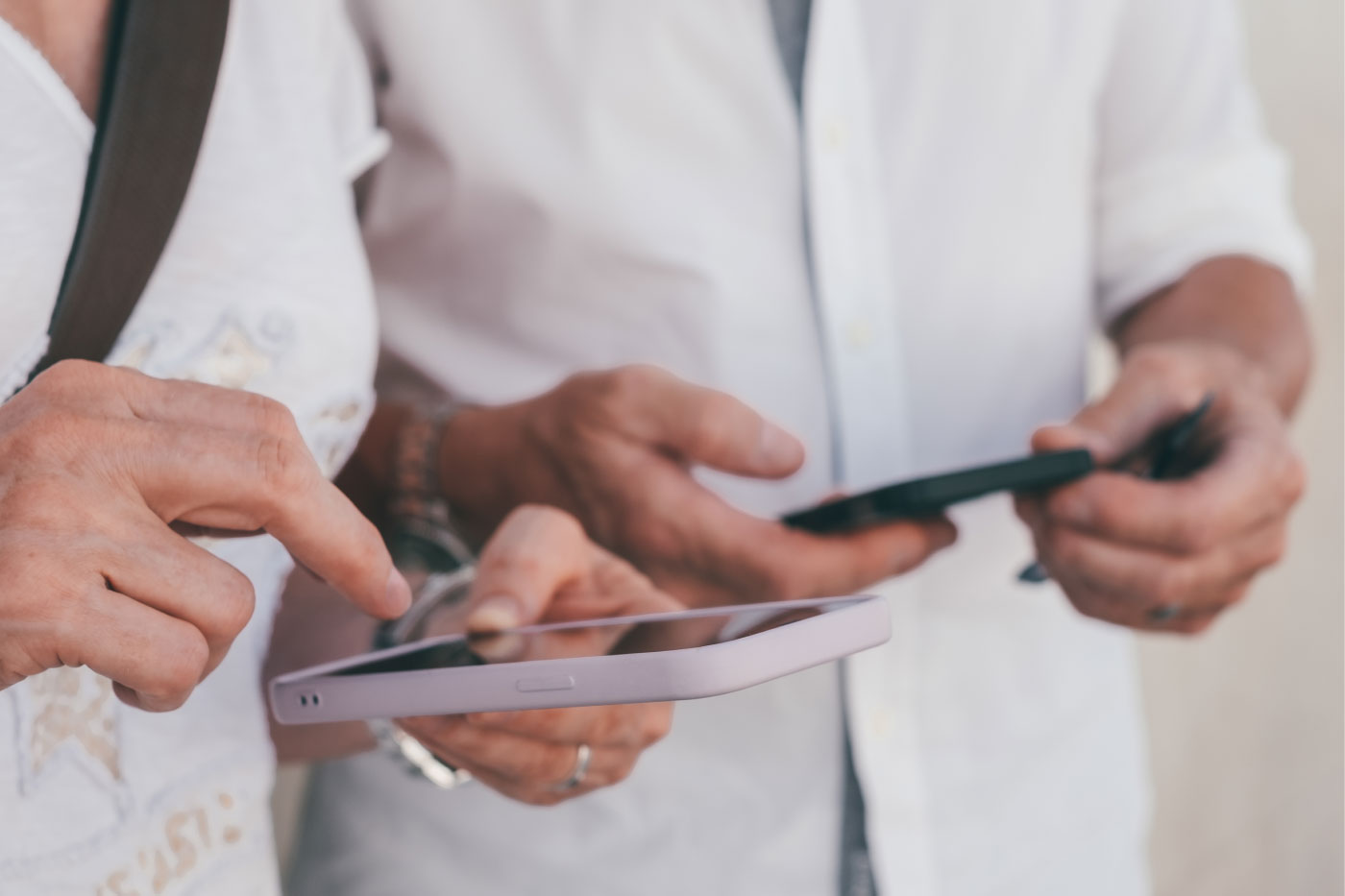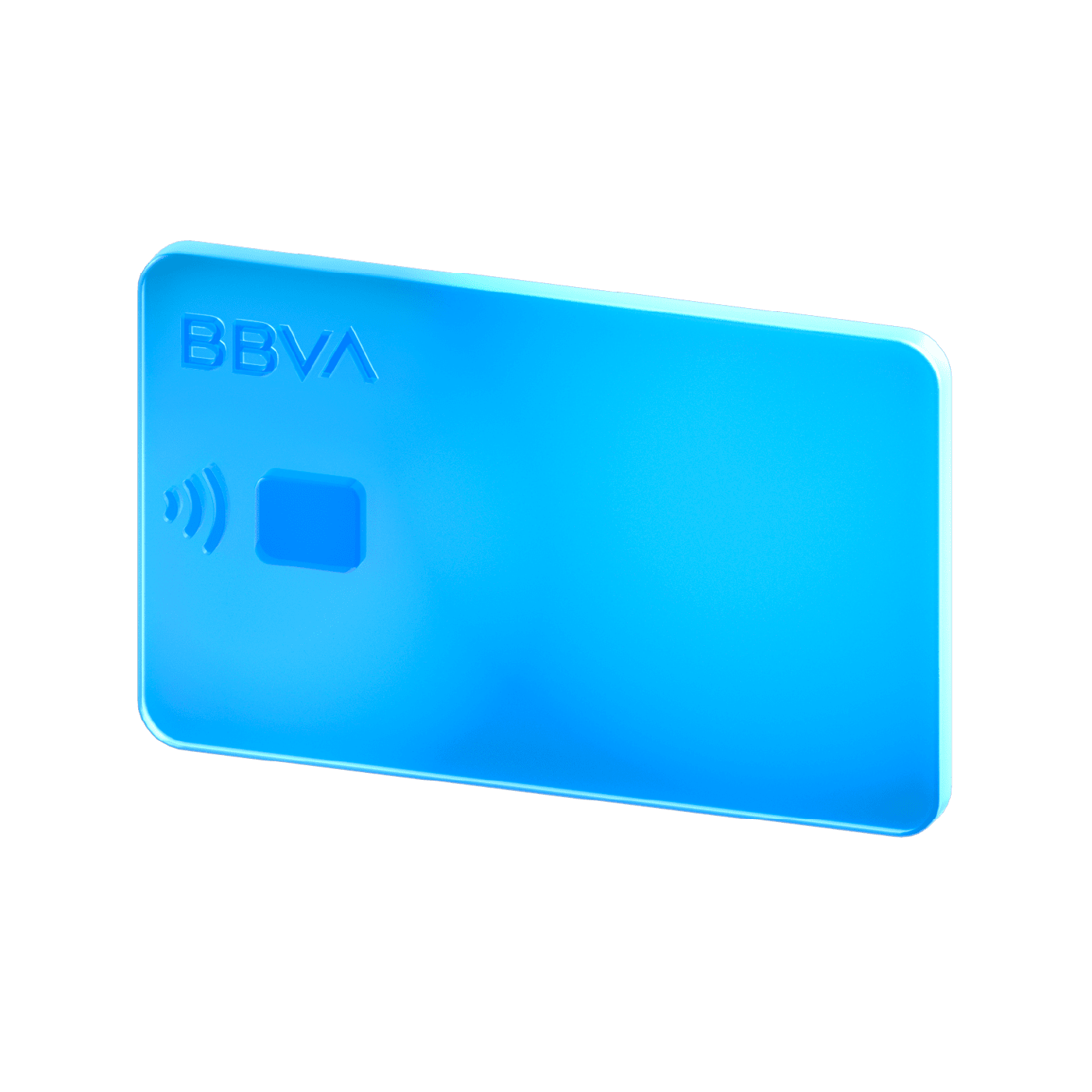How does a digital wallet work?
Digital wallets provide an easy way to manage debit and credit cards, loyalty cards, tickets, and even cryptocurrencies. They work by linking to a payment source, such as a debit or credit card. When used, the card details are transmitted in encrypted form. They use modern security procedures such as Face ID, factor authentication (2FA), or biometric recognition to authorize payments.
Here is an example: When shopping, you can hold up your smartphone or Apple Watch to the payment terminal. Near Field Communication (NFC) means that the payment is immediately transferred without you having to insert a card or enter a PIN.
Pay with your smartphone
What are the different types of wallets?
Here are the most popular apps used by consumers worldwide:
- Mobile wallets for everyday use
These wallet apps allow you to store your bank cards and pay directly using your smartphone. Some of the best-known providers are:
- Apple Pay: for iOS users; works with iPhones, iPads, and Apple Watch
- Google Pay: the Android alternative, compatible with many smartphones
- Samsung Pay: a wallet app designed specifically for Samsung devices
These mobile wallets use Near Field Communication (NFC) to enable contactless payment in shops. You can also use some of them to scan a QR code that can be used to pay bills, or send and receive money.
- Crypto wallets for digital currencies
In addition to classic wallet apps, there are special crypto walletsthat are used to store and manage cryptocurrencies such as Bitcoin or Ethereum. There are two main types:
- Hot Wallets: Digital wallets that are connected to the Internet.
- Cold wallets: Physical devices or offline software that are particularly secure because they are not stored online.
How secure are digital wallets?
Security is a top priority for digital wallets. Most wallets use:
- Encryption technologies: Your card details are never shared with merchants
- Biometric authentication: Secure identification using facial recognition or your fingerprint
- Two-factor authentication (2FA): Additional protection through a second security factor
- Dynamic security codes: Each time you want to make a mobile payment, a new code is generated so that fraudsters cannot steal your card details.
With BBVA, you can use your digital wallet immediately after you open your account, without having to wait for a physical card.
The advantages of a digital wallet
A digital wallet makes daily payments easier, and offers lots of advantages.
- Speed and convenience: Simply hold up your smartphone or Apple Watch to a terminal.
- Security: Your data is protected using 2FA, Face ID, and NFC technology.
- Global use: No problems with exchange rates or cash abroad.
- Full cost control: Wallet apps display all your payments at a glance.
- Flexible payment: Supports both cards and cryptocurrencies.
How do I set up a digital wallet?
It only takes a few minutes to set up a digital wallet.
- Download the app: Download a wallet app such as Google Pay to your smartphone.
- Add your card: Link your debit or credit card.
- Choose a payment method: Choose your wallet to be the default option for online and contactless payments.
- Use your wallet: Pay in stores using NFC, or pay online with a QR code.
BBVA's digital debit card
Try it out for yourself. Open a BBVA current account, request your free digital debit card, and use it straight away in your digital wallet.
Once you've added the card to the app, your smartphone will generate a virtual code so that your card number is never transmitted when paying, and your money always remains safe.
Your payment information is stored securely – you don't have to enter your card details every time or have your card with you.



